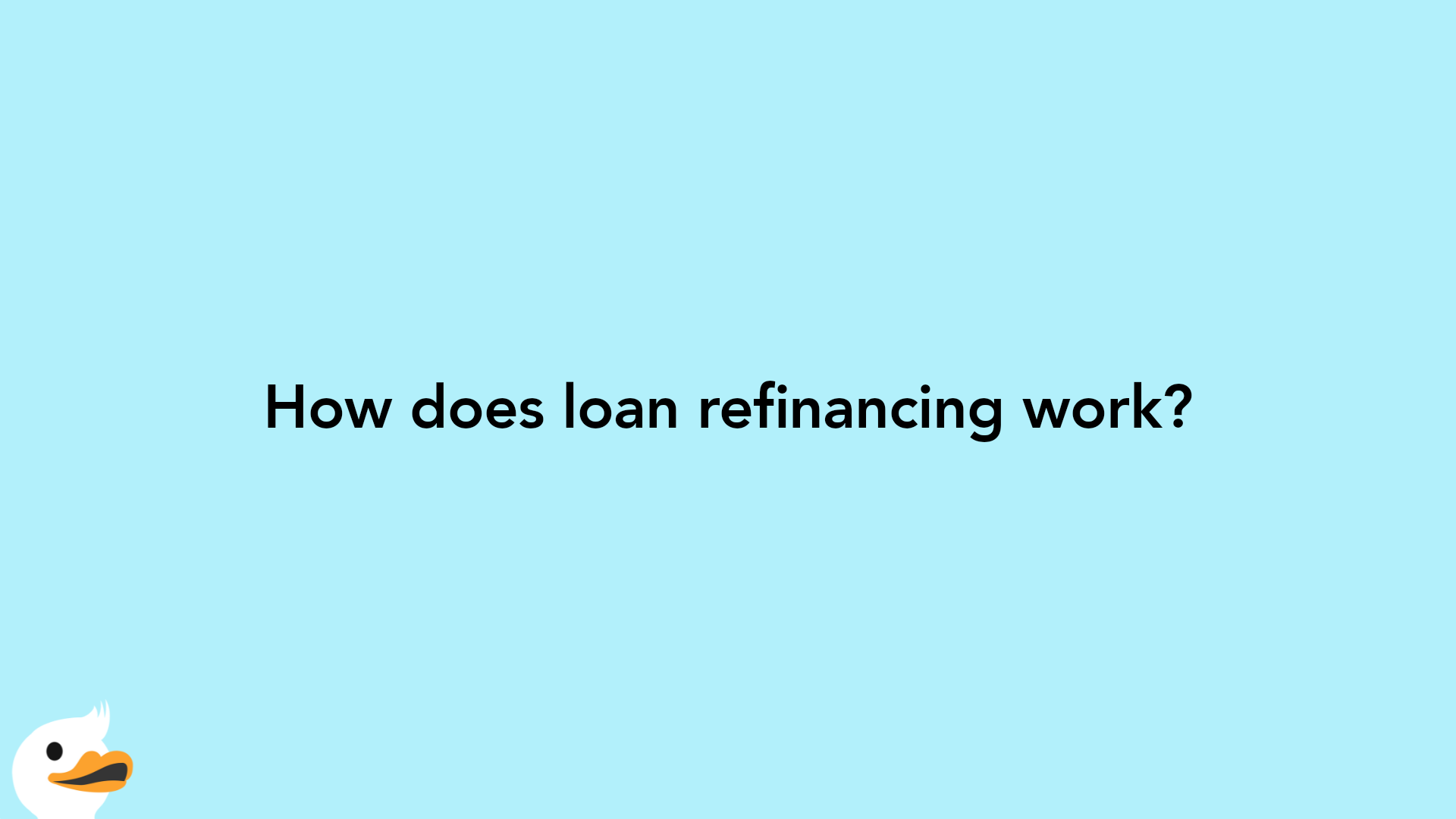Refinancing your personal or home loan can potentially save you money and consolidate your debt. However, it comes at a cost and is not advantageous for everyone. Here’s what you need to know.

Look Studio/shutterstock.com
How does loan refinancing work?

When you refinance your loan, you are essentially trading in your old loan for a new one, ideally with a new lower interest rate and a new mortgage term. You may refinance with your current bank or you may choose to use another lender. You still have the same amount of debt, but the goal is to lower your interest rate and shorten the term in order to save on interest in the long run.
Another possible reason to refinance is to consolidate debt. This article will address the steps for refinancing. These steps are specifically designed for refinancing your home loan, although the same principles apply for refinancing a personal loan as well. Mortgage loans are simply more complicated and have more hoops to jump through.
Step 1: Confirm You Are Eligible For Refinancing
There are a few things that could make you ineligible to refinance. First, calculate your debt using the Total Debt Servicing Ratio (TDSR) framework. TDSR dictates that you can’t use more than 60% of your monthly gross income to repay loans. This is including your car loans, credit card bills, and student loans. In the case of refinancing, the TDSR limits do not apply to mortgages in which the borrower is living in the house, but it does apply to any investment property.
Second, as when you first financed your loan, your credit score is important for banks to lend money to you. Always try to increase your credit rating, check your credit report for mistakes, and take steps to address any errors on it.
Third, even though it is tempting to immediately refinance your loan when you see better interest rates, it is advisable to wait until your lock-in period is over. A lock-in period is typically 2 or 3 years where you will be heavily penalized if you move your loan elsewhere during this time. Be sure to check the terms of your loan for details.
Fourth, check if your bank offered subsidies for legal and valuation fees when you signed the first loan. The “clawback” period is if you attempt to refinance during this period, you will need to repay all subsidies. This would likely run you between S$2,000 and S$3,000. It is worth noting that if you break the three year clawback period and refinance to a new bank, you will have to pay back the clawback fees to the old bank and any legal fees, fire insurance, etc. to the new bank.
Essentially, you are “double paying” for not waiting. Fifth, check your terms and conditions to see whether your bank requires notice if you want to refinance. You can only serve notice of your desire to refinance on specified interest rate reset dates, which occur approximately every one to three months, depending on the SIBOR/SOR duration of your loan.
Step 2: Calculate the Refinancing Costs
When you start the legal process of refinancing, you may need to hire a lawyer. In some cases, the banks may offer a subsidy to help offset the cost. In general, the legal fees cost approximately S$2,000, depending on the type of property and loan type.
As part of the refinancing process, your new lender will appoint a valuer to appraise your property. This is to make sure that the loan amount is within the allowed loan-to-value or LTV ratio. This appraisal is an assessment of lending risk. The higher the LTV, the higher the risk and the more the loan will cost the borrower. The valuation fee ranges from a few hundred dollars to thousands of dollars.
These costs are in addition to any redemption costs of refinancing, such as the clawback and lock in penalties.
Step 3: Shop For Quotes
If you are eligible for refinancing and have weighed the costs, it is now time to start researching and shopping for quotes. It is ideal to start shopping approximately 6 months before your lock-in period and/or clawback period is over. Some borrowers start shopping 6 months before the higher interest rates take effect on the 4th year of your home loan. This time period can overlap with your notice of desire to refinance to your bank.
Of course, it is advisable to first use a mortgage refinance calculator to know what you can afford to spend monthly. As you have probably researched with your first loan, you may decide to change what kind of home loan you want: fixed rate, SIBOR/SOR pegged rate or board rate. One mistake to avoid is lengthening your loan tenure while refinancing. For example, your first loan may have been a 25-year mortgage, however, when you finance, you enter a new 25-year mortgage, starting all over again. Extending your mortgage can significantly reduce your monthly payments since you are spreading out the remaining loan principal over a longer period of time. However, by extending the loan tenure, you are extending the amount of interest you pay every month. Instead, try opting for a shorter-term loan, or one that closely matches your current mortgage.
Avoid trying to time mortgage rates. Interest rates change daily. If you wait too long, you may miss the opportunity. By the time all the paperwork goes through, the refinance rate may have already increased. Instead, compare offers from different lenders.
Step 4: Apply for the New Loan
It is time to gather all your paperwork and documents to apply for the new loan. Be sure to consult your conveyancing lawyer or broker to help with this process. The application process takes a few months before your new home loan package is valid. When working with a lawyer, you will need to: Choose a law firm to complete the transaction. Your existing bank will send your law firm a preliminary redemption statement. You will sign required documents, including the mortgage document. The final redemption statement will be sent by the bank. Your new bank will send you a notice of when your new monthly installments will take effect. Even after your lawyers have sent the notice to redeem, remember to continue paying the monthly installments on the loan. This is a safety precaution to avoid any late payment interests and penalties.
Final Thoughts

Refinancing your home loan can be advantageous if you plan well. In fact, it can shorten your loan tenure and save you money on interest. Always weigh the costs first. This includes legal fees, valuation fees, and any penalties that come with refinancing that are located in your terms and conditions. By following these steps, you will pay off your loan in no time!

















Please leave your knowledge and opinion!